

Pentylene Glycol, plant based, natural, palm-free, Ecocert/ Cosmos approvedINCI Name:Pentylene GlycolCAS # 5343-92-0EC # 226-285-3Glycols are known to be excellent moisturizers, solvents and antimicrobial ingredients (preservative boosters). They have a better dissolving power and less stickiness compared to glycerine. The problem is, they were considered as cheap solvents derived from mineral oil and were hence a no-go in natural & organic cosmetics.Since a few years however, plant based glycols, derived from sugar cane and corn are available and are getting more and more popular in the green cosmetic industry. These excellent humectants could be applied in all leave-on and rinse-off hair & skin care products. Glycols improve the stability of water based products at lower temperatures (well, mineral oil based propylene glycol is the well known anti-freeze agent used in winter in automobiles). We recommend this ingredient to be applied whenever you don't like the stickiness of glycerine but far beyond that, we recommend this ingredient to be applied in "micellar waters" for creating stable, transparent and natural micellar waters. The low dosage of the ingredient justifies its high price.Pentylene glycol is slightly miscible with oils and is a solubilizer booster. By applying it you can reduce the dosage of the solubilizer (and the foaming) in your formulations.Water soluble ingredientDosage: 0.5-5% (in micellar waters 2-4%)

Peppermint oil, organic cerified according to EU-Öko-VerordnungOrigin: India100% natural and pure essential oil obtained by steam distillation of the leavesINCI: Mentha piperita oilCAS# 84082-70-2 / 8006-90-4EINECS# 282-015-4 8006-90-4 -You'll receive the complete analysis, SDS and the breakdown of allergens with your orderStorage condition: Keep in a closed container protected from heat and direct light.sensitizing to mucous membrane. Do not apply to the face or near the face of infants and children. Max. dermal limits: 5,4%


Pequi fruit oil, organic, unrefined, virgin INCI: Caryocar brasiliense fruit oil Iodine value 40-55 g l 2 /100g Saponification value 190-210 mg KOH/g Pequi oil is obtained by cold pressing of fruits of the pequi tree, an Amazonian tree. The oil is used in the kitchen for cooking and frying or as a butter replacement. Apart from that, it is gaining popularity in pharmacy and cosmetics. The yellow to orange colour of the oil is because of the high content of carotenoids. ca 67-290 ppm total content of carotenoids with ca. 62-115 ppm beta-Carotene and 11-20 ppm Lycopene. Pequi oil consists mainly of palmitic and oleic acid. It has a melting point around room temperature and is liquid during summer and semi-solid during winter, Pequi oil has a mild nutty scent. It is an excellent oil for pampering dry skin and hair, specially care and styling for curly and wavy hair. In a scientific study of 2011 it has shown antibacterial properties : salmonella cholerasuis (MIC < 1.25%), Staphylococcus aureus (MIC 1.25%), Pseudomonas aeruginosa (MIC 1.25%) and Streptococcus pneumoniae (MIC 5%)

Petitgrain oil, organic and Ecocert certifiedOrigin: Paraguay100% natural and pure essential oil obtained by steam distillation of the twigs and leaves.INCI: CITRUS AURANTIUM LEAF/TWIG OILCAS# 72968-50-4 / 68916-04-1EINECS# 277-143-2 / -You'll receive the complete analysis, SDS and the breakdown of allergens with your order.Storage condition: Keep in a closed container protected from heat and direct light.Can cause phototoxic reactions. IFRA recommended max. dosage for personal care: 2,0%.


INCI: Sepiolite, Indigofera Tinctoria ExtractThis is a 100% natural pigment with a full compliance with cosmetic regulations and COSMOS approved suitable for leave-on as well as rinse-off products.The pigment is partially soluble/dispersible in both hydrophilic and lipophilic carriers.Just by applying a very low dosage (0,05-0,2%) you can impart a beautiful photostable blue colour into cosmetic products such as oleogels, hydrogels, shower gel and shampoo, handwashing liquids, balms and butters and powders
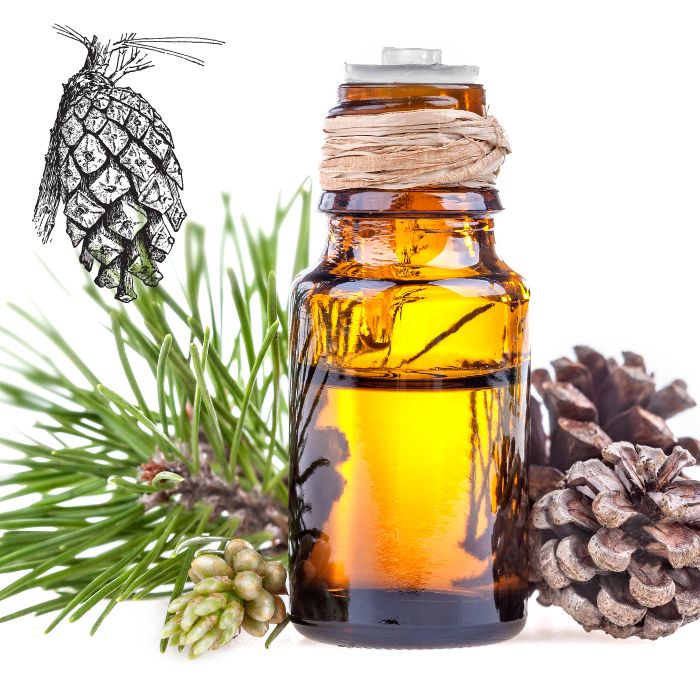
Pine oil, organic and Ecocert certifiedOrigin: France/Bulgaria100% natural and pure essential oil obtained by steam distillation of the needles and branches of the Scotch pineINCI: Pinus sylvestris oilCAS# 84012-35-1 / 94266-48-5EINECS# 281-679-2 / 304-455-9You'll receive the complete analysis, SDS and the breakdown of allergenes with your orderStorage condition: Keep in a closed container protected from heat and direct light.No dermal limits for this oil.Expiry date of the available charge: 06/22
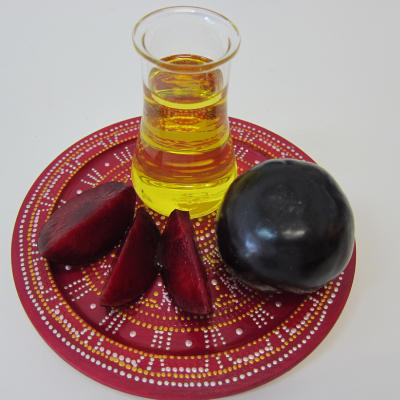
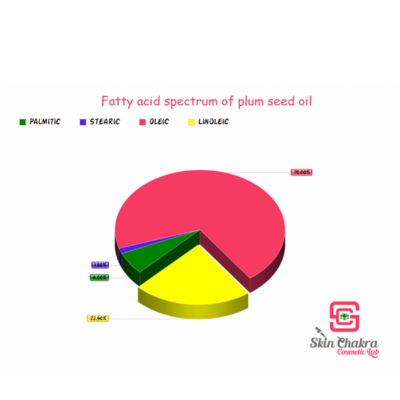
INCI: Prunus domestica seed oil CAS # 90082-87-4 EC # 290-179-3 Saponification value: 170-210 mg KOH/gr Iodine value: 90-120 This lovely oil with almost no inherent colour and a pleasant warm scent consists mainly of oleic and linoleic acids (omega-9 and omega-6). Apart from that, the unrefined and virgin oil, (cold pressed, no solvents used) contains high concentrations of phytosterols, mainly beta-sitosterol (815 ppm) and Delta-5-avenasterol (75 ppm) as well as high concentrations of alpha and gamma tocopherol (79 and 612 ppm respectively). An excellent oil for hair, body, face and lip care.


INCI: Polyglyceryl-2 Stearate (and) Glyceryl Stearate (and) Stearyl AlcoholEcocert, cosmos conformmelting point ca. 70° CElectrolyte tolerance: ca. 3%This is an easy to work and forgiving O/W emulsifier (completely plant derived and suitable for vegan formulations- not palm-free).The emulsifier is self-emulsifying and promotes lamellar structure for an improved barrier protection and repair. You can add this emulsifier to the water or to the oil phase and can emulsify 0-25% oil phase with 3-5% emulsifier.It has a very soft and non-greasy skin feel with no soapiness.We recommend this emulsifier for all hair & skin care products such as : baby products, cleansing milks, after sun, shower creams, day and night care.Read this blog post for more information and instructions.


INCI: Polyglyceryl-4-Caprate/ PG-4-caprateCAS number: 160391-93-5This is a palm-free and vegan emulsifier based on rapeseed, castor, coconut and sunflower oil. This is the more polar brother of the polyglyceryl 4-oleate which is used in oil-to-milk waterless cleansers. Because of its higher polarity you need to blend it with PG-4 oleate in oils but you can use it as a standalone emulsifier in cleansing balms and scrubs. The after-rinsing skin feel is much more pleasant compared to the PG-4 oleate because of the higher polarityApplication dosage: 1-10%A sample formulation from our blog

INCI: Polyglyceryl-4-oleate/ PG-4-OCAS number: 71012-10-7 / 9007-48-1HLB: 4-6This is a palm-free and vegan emulsifier based on olive and sunflower oil. With an HLB between 4-6, it is a W/O emulsifier that could be processed both cold and hot. It's extraordinary and most attractive function is however, the ability to create self-emulsifying waterless products such as cleansing oils, balms, scrubs, etc. The product turns to a milk by applying water and is easily rinse-off without leaving any unpleasant greasiness or stickiness.Application dosage: 5-15%Have a look at this blog post for a formulation example and some inspiration.

Organic pomegranate CO2 extract, stabilized against oxidation with 0,1% organic rosemary CO2 extractINCI: Punica granatum seed extract and Rosmarinus officinalis leaf extractCAS-#: 84961-57-9 and 84604-14-8EINECS-#: 284-646-0 and 283-291-9Halal and Kosher certifiedThe extract contains all CO2 soluble components of pomegranate seed including:more than 70% punicic acid which is a unique conjugated fatty acidLinoleic acid 5%Oleic acid 5%Palmitic acid: 2,5%Stearic acid: 2.0%Ca. 2000 ppm Tocopherols, 8000 ppm Phytosterols and 200 ppm Squalene.Application dosage: 0,5-5,0%Preferrably store this product cool to prolong shelf-life. A temporary turbidity may occur which doesn't negatively affect the quality.Store between 5-15 degrees Centigrade.
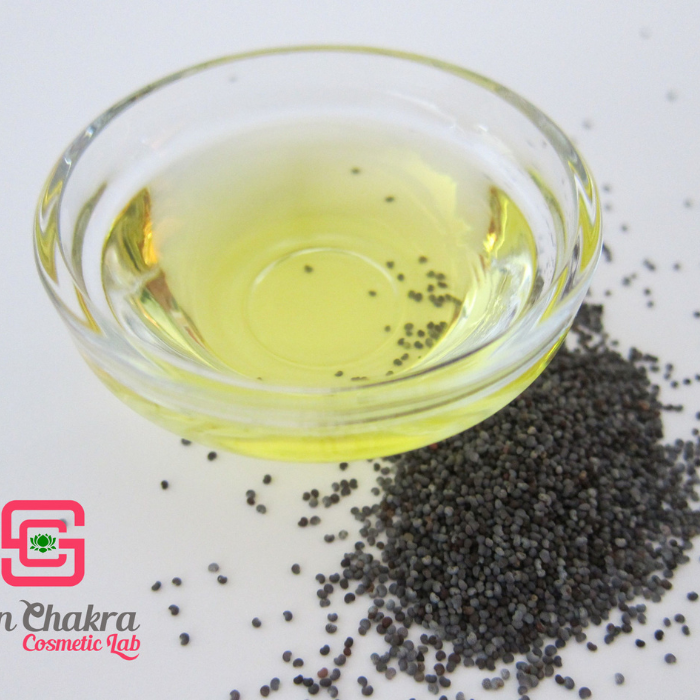
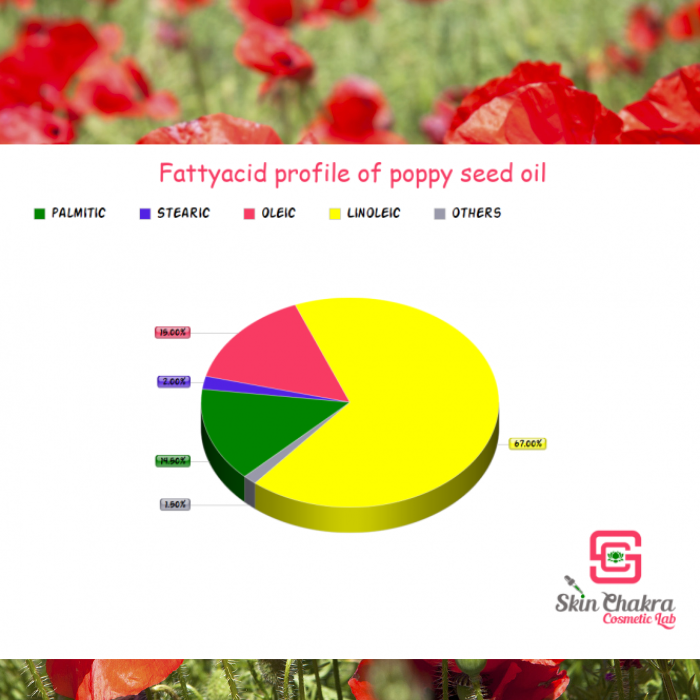
Poppy seed oil, organic INCI Name: PAPAVER SOMNIFERUM SEED OIL Family: papaveraceae CAS # 84650-40-8 EINECS/ELINCS # 283-510-8 Iodine value: 133-197 Saponification value: 189-197 mg KOH/gr The oil consists basically of oleic (30%) and linoleic acid (60%). It is a fine oil for cold dishes and salads with a spicy note. Poppy seed oil is an excellent skin and hair care oil with a slightly greasy after feel but a very covering and protecting effect. It is applied in all kinds of cosmetics and in luxury soaps. Applied in soaps, it helps harden the soap. It is an excellent anti-aging oil and contains about 500 ppm tocopherols and 400 ppm phytosterols (mainly spinasterol and campesterol)

INCI: Glycerin, Aqua, Sodium Levulinate, Sodium AnisatePreservative 1388 ECO is an antimicrobial blend that provides excellent protection in your cosmetic products. It is Ecocert certified, is palm-free and is applicable in "natural and organic" cosmetics. Even better, it allows you a "preservative-free" claim (although we do not promote this claim). It's applicable in all kinds of cosmetics from tonics and splashes to gels and emulsions. It imparts outstanding protection against bacteria (Gram positive and negative) as well as against mold. It is an excellent preservative for hydrosols and plant extracts.We specially recommend this preservative as a stand-alone water soluble (no need for any solubiliser) preservative for water based products such as tonics and body splashes where you don't apply any other oil soluble ingredient and want to avoid any solubiliser. You can boost its activity by applying 0.1% of Natural chelator PA-3 which is a natural chelating agent.In Emulsions it has a weak activity against yeast and you may need to combine it with other preservatives with a higher anti-yeast activity such as potassium sorbate or Glyceryl caprylate GMCY (0.5%) (specially if you're applying high concentrations of natural ingredients such as honey, aloe, clays and gums in your formulation).In addition to preserving, Preservative 1388 Eco imparts moisturizing and anti-inflammatory properties to the product.Application dosage: 3,0-4,0% (the manufacturer has updated the dosage to 2,0-4,0% recently but according to our experience 2,0% is not enough for a full spectrum preserving)Application pH: although the supplier recommends a pH range between 4.5-5.5, we recommend a pH range between 5.0-5.5 according to our experience and further discussion with technical experts of the manufacturer. At a pH lower than 5.0, the product becomes insoluble and might cause turbidity or emulsion separation.Application mode: adding to the water phase. Needs no solubilizer in transparent liquidsWe recommend blending preservative 1388 ECO with Glyceryl caprylate GMCY (ca. 0,5%- specially in creams and lotions to boost the yeast protection) and Natural chelator PA-3 (0,05-0,5%) as a natural chelating agent. Chelating agents bind metal ions (specially iron and copper and destabilise microorganisms, boosting the preservative efficacy).Disclaimer: This information and the information provided by the manufacturer are no replacement for a preservative efficacy test or challenge test.

INCI: benzyl alcohol, benzoic acid, dehydroacetic acid and tocopherol K903 is an effective preservative at low concentrations for all rinse-off and leave-on products.Just like all other weak organic acids, its efficacy is extremely pH dependent and optimum application pH is pH<6. (we recommend 5.0-5.5)In the EU there is a limitation for benzoic acid and benzyl alcohol concentration and the max. allowed concentration for K903 is 1,23%. Keep that in mind if you're applying other ingredients that are preserved with benzyl alcohol or benzoic acid.Since the preservative has lipophilic components, it is not completely water soluble. In products without an oil phase (lotions) or a surfactant (shampoo, facial cleansing foam) you'll need a solubilizer to incorporate it into water. Technically it is possible to use a solubilizer like natural solubilizer clear plus for this purpose. We recommend however to use this preservative only in lipid containing formulations (lotions, balms) to avoid sensitization.Read our blog post about benzyl alcohol and how to work with it for a best performance and least sensitization.
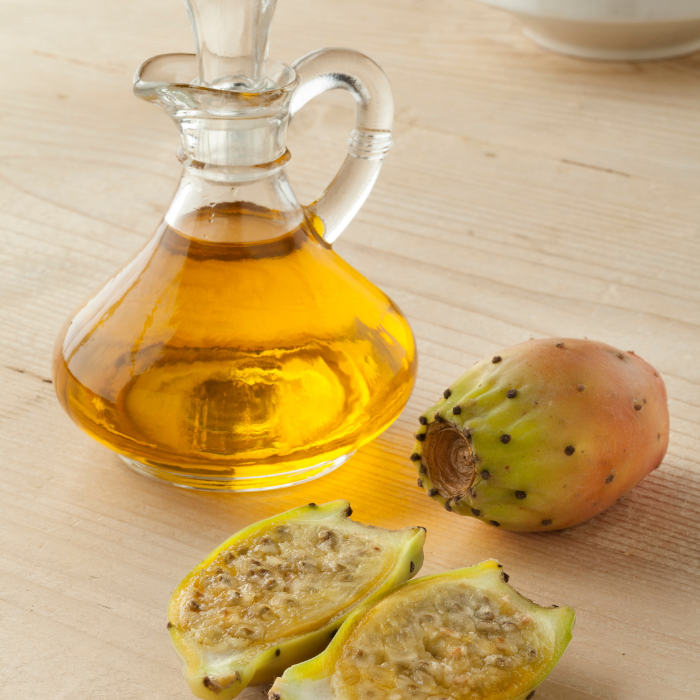
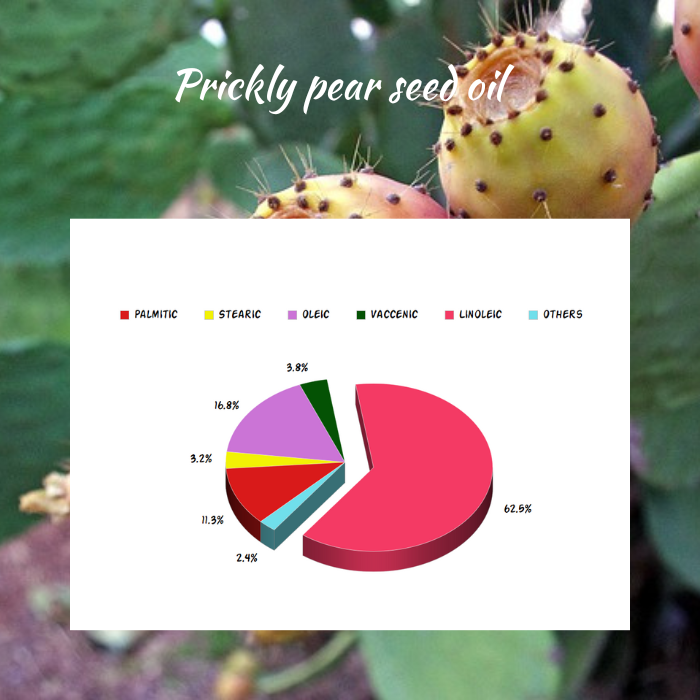
Organic prickly pear seed oil INCI: OPUNTIA FICUS-INDICA SEED OIL CAS # 90082-21-6 EC # 290-109-1 Iodine value: 100-129 g I2/100 gr Saponification value: 165-200 mg KOH/gr An extraordinary oil with an extraordinary composition. This oil has a high content of linoleic and palmitic (a constituent of our skin barrier) as well as a very high content of phytosterols (15000 ppm with beta-sitosterol being the major component) and a high content of tocopherols (540 ppm: mainly alpha- and gamma-) and beta-carotene (47 ppm)

7-Dehydrocholesterol also known as provitamin DINCI Name: 7-DehydrocholesterolCAS #:434-16-27-Dehydrocholesterol which is naturally present in skin, is a precursor of vitamin D 3 and cholesterol.Under UV irradiation, Skin’entialTM DC is metabolized to vitamin D 3 in the skin, further converted to its active metabolite (calcitriol) for skin protection by:Improving barrier functionProtecting against UV damages and senescenceStimulating natural antimicrobial peptidesApplication dosage: 0,01-0,1%Application: in the cold oil phaseClick here for a sample formulation on our blog.This product is not suitable for vegan formulations.Storage:This ingredient absorbs moisture and may degrade when not protected from light and humidity.We deliver 7-Dehydrocholesterol together with natural desiccant sachets to protect it from humidity during transport and recommend that you store this ingredient in a well closed container in the fridge. Our sachets are environmental friendly and biodegradable (natural clay) and you can discard them with your usual household trash.

Proteol APL EFINCI: Sodium cocyl apple amino acidsProteol APL EF is a mild anionic surfactant based on amino acid. It is mild enough to be used in baby products and performs gentle cleansing. It creates a thick and creamy foam. It is a clear, low viscosity solution and quite easy to apply. It is highly biodegradable.Proteol APL EP could be applied as a standalone surfactant or in a synergetic blend with other surfactants in all cleansing products such as facial cleansers, cleansing foams, gels, bubble baths, micellar waters, shampoos etc.Proteol APL EF is compatible with all other anionic, nonionic and amphoteric surfactants.Application dosage : 1-10%Active material: ca. 30%This raw material contains ca. 5% hexylene glycol.

INCI: Rubus Idaeus (Raspberry)Seed Extract, Rosmarinus Officinalis (Rosmary) Leaf ExtractCAS# 84929-76-0, 84604-14-8EINECS# 284-554-0, 283-291-9Rosemary extract is used at <0.1% concentration as an antioxidant.Kosher and Halal certifiedThis extract contains CO2 soluble ingredients of raspberry seed such as fatty acids, among them linoleic acid (48-63%) and alpha-linolenic acid (23-30%), as well as tocopherols and TocotrienolsThis is a lipophilic (oil soluble) extract that you can use in your oil blends, balms and butters as well as in the oil phase of your emulsions. We recommend a dosage between 0.5-5.0%Store between 5-15 degrees Centigrade.


Raspberry seed oil, virgin, cold pressed and organic INCI: Rubus idaeus seed oil CAS# 84929-76-0 EINECS# 284-554-0 Iodine value: 160-195 Sap. value: 191 mg KOH/gr High in linoleic (omega-6) and alpha-linolenic acid (Omega-3) this is a lovely oil for anti-aging formulations. The tocopherol content of the oil is about (3200 ppm) with 1260 ppm alpha-tocopherol and 1940 ppm gamma-tocopherol.
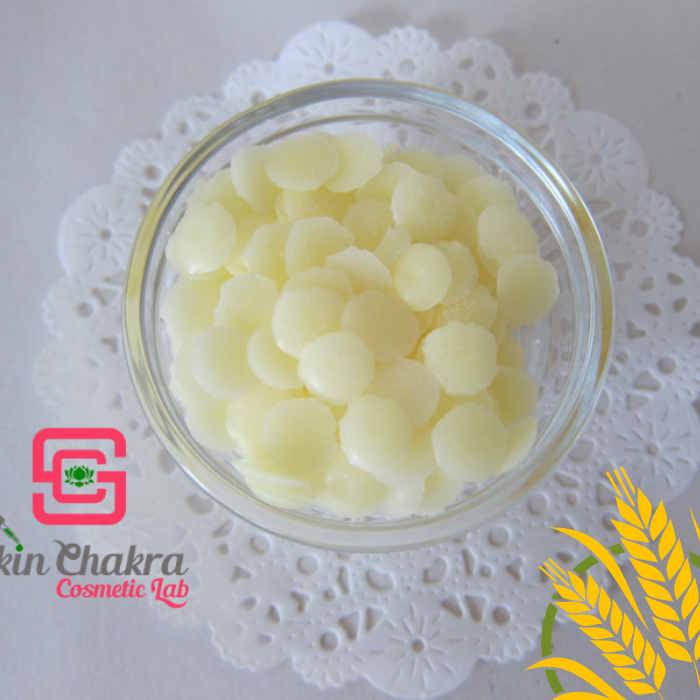
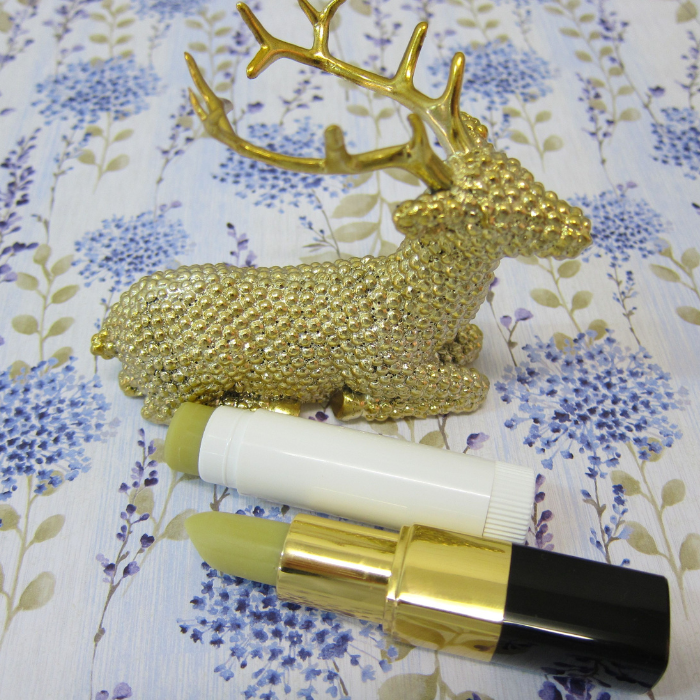
Rice bran wax, Ecocert (Cosmos natural), Halal and Kosher certified. INCI: Oryza sativa cera CAS#: 8016-60-2 Melting range: 79–85°C Acid value: <15 mg KOH/g Saponification value: 65-95 mg KOH/gr Rice wax is a pale yellow wax and is generated as by-product of the preparation of Rice bran oil. A unique milling, extraction, and refining process results in edible oil, waxy side-products, and crude wax. The latter is used for the production of Rice bran wax which mainly consists of esters of C 16 -C 24 fatty acids and higher alcohols (C 26 -C 32 ). Rice bran wax imparts a silky skin feel and reduces stickiness of emulsions. It is added to balms and butters to impart consistency , improve stability at high temperature and impart a matt optic. It is applied in all hair and skin care products specially in stick formulations such as lipstick, deodorant balms, hair styling wax, facial balm sticks and foundation sticks. Its melting point is in the range of carnauba wax and slightly higher than candelilla wax. It is a nice substitute for beeswax in vegan products and since its melting point is higher than bees wax, you need to reduce the dosage of the wax when replacing beeswax with rice bran wax.Download our free guide about natural waxes here.Read this blog post with a sample formulation

RenouMerINCI: Aqua, Polysiphonia Elongata Extract (Algae Extract),Sodium Benzoate, Citric Acid.This is a hydrophilic and preserved (natural cosmetics conform) extract from sustainable resources. The red alga is gathered on Breton coast.Even at low concentrations RenouMer improves collagen synthesis, skin smoothness and complexion and moisture retention.The extract has a very light yellowish colour that doesn't show up in the finished product. The scent is very subtle, rather green and not "fishy".Application dosage: 1,0-2,0%

INCI: Rosa Canina (Rosehip) Seed Extract, and Rosmarinus Officinalis (Rosemary) Leaf ExtractCAS-No. 84696-47-9, 84604-14-8,EINECS-No.283-652-0 , 283-291-9This extract is stabilised by <0,1% rosemary CO2 leaf extractHalal and Kosher certified.This beautiful extract contains CO2 soluble components of the rosehip seed such as 41 - 59 % linoleic acid (C18:2, omega-6), 20 - 35 % alpha-linolenic acid (C18:3, omega-3), 12 - 22 % oleic acid (C18:1, omega-9), small amounts of stearic and palmitic acid, tocopherol and 0,01 - 0,02 % carotenoids.This is a lipophilic (oil soluble) extract and you can apply it in your oil blends, oleogels, balms and butters or the oil phase of your emulsions.Application dosage: 0.5-3.0%Read this blog post about Rosehip CO2 extract and its comparison to the pressed oil.Store between 5-15 degrees Centigrade.


Rose hip oil, organic, virgin, cold pressed INCI: Rosa canina fruit oil CAS# 84696-47-9 / 84603-93-0 EINECS# 283-652-0 / - Saponification value:189-194 Iodine value:152-169 This amazing oil with a high content of linoleic acid, oleic and alpha-linolenic acid is very popular as an astringent oil and in cosmetic products to improve scars and stretchmarks and to promote wound healing and regenerating tissue and promoting collagen production. Its extraordinary therapeutic properties are due to low contents of trans-retinoic acid. The oil has a low content of tocopherols (390 ppm) and we recommend you add either 0,1% tocopherol or rosemary CO2 extract to protect it against oxidation. Although the fruit contains 20 times as much ascorbic acid (vitamin C) as oranges, the oil does not contain any vitamin C. Read this blog post about Rosehip oil and its comparison to the rosehip CO2 extract.
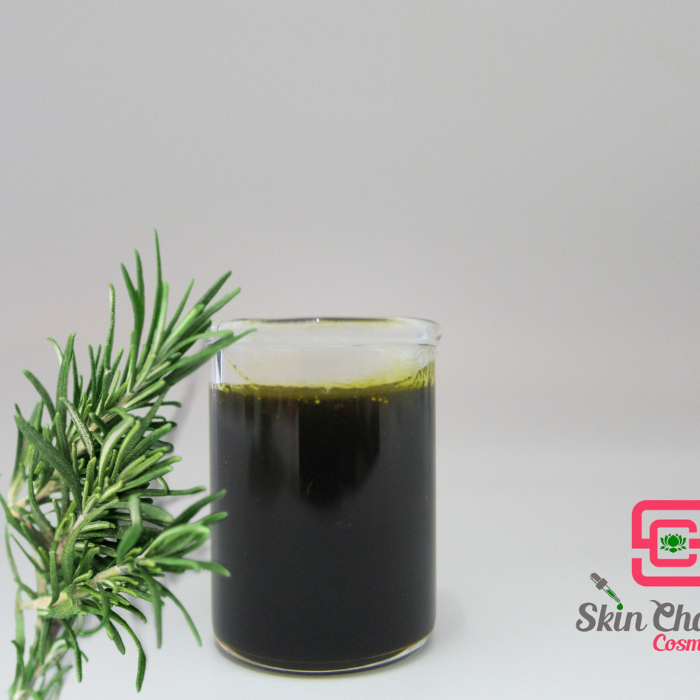
Organic CO2 extract of Rosemary leavesINCI: Rosmarinus Officinalis (Rosemary) Leaf Extract, and Helianthus Annuus (Sunflower) Seed Oil,CAS-Nr. 84604-14-8, 8001-21-6,EINECS-Nr. 283-291-9, 232-273-9This product is Kosher certifiedThis is a dark brown, high viscosity fluid with an amazing anti-oxidant activity, much higher than that of tocopherol. This is slightly different to the ROE which has the same antioxidant properties but is solvent extracted. A drop goes a long way and the low dosage and the efficacy justifies its price. You can add this extract to all of your carrier oils, oil blends, soaps, serums, lotions and balms to prolong the oxidative shelf-life of the ingredients and the final product, to avoid rancidity and to avoid those dreadful orange spots on your pretty natural soaps.The antioxidant activity depends on the content of carnosic acid and total di-terpenephenols. This extract contains 25% di-terpenephenols (highest concentration) and 20% carnosic acid.Dosage: 0.05-0.1% in soaps, emulsions, oil blends, emulsions, balms and crude oilsYou may need to heat and shake the bottle before application specially in winterFragrance allergens:Linalool <0.1%d-Limonene <0.2%
